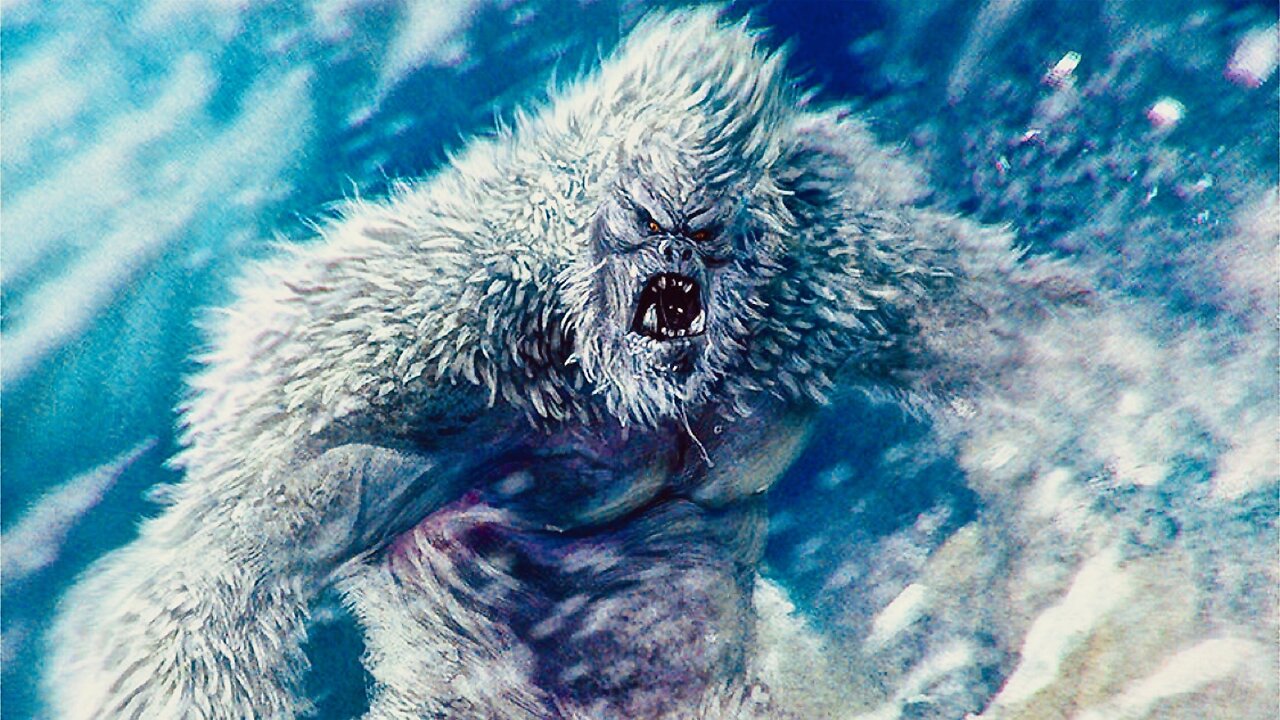Premium Only Content

Mystery of Himalayan Big Foot -"Yeti" - Abominable Snowman
The Yeti, once better known as the Abominable Snowman, is a mysterious bipedal creature said to live in the mountains of Asia. It sometimes leaves tracks in snow, but is also said to dwell below the Himalayan snow line. Despite dozens of expeditions into the remote mountain regions of Russia, China and Nepal, the existence of the Yeti remains unproven.
The Yeti is said to be muscular, covered with dark grayish or reddish-brown hair, and weigh between 200 and 400 lbs. (91 to 181 kilograms) It is relatively short compared to North America's Bigfoot, averaging about 6 feet (1.8 meters) in height. Though this is the most common form, reported Yetis have come in a variety of shapes.
History of the Yeti
The Yeti is a character in ancient legends and folklore of the Himalaya people. In most of the tales, the Yeti is a figure of danger, author Shiva Dhakal told the BBC. The moral of the stories is often a warning to avoid dangerous wild animals and to stay close and safe within the community.
Alexander the Great demanded to see a Yeti when he conquered the Indus Valley in 326 B.C. But, according to National Geographic, local people told him they were unable to present one because the creatures could not survive at that low an altitude.
In modern times, when Westerners started traveling to the Himalayas, the myth became more sensational, according to the BBC. In 1921, a journalist named Henry Newman interviewed a group of British explorers who had just returned from a Mount Everest expedition. The explorers told the journalist they had discovered some very large footprints on the mountain to which their guides had attributed to "metoh-kangmi," essentially meaning "man-bear snow-man." Newman got the "snowman" part right but mistranslated "metoh" as "filthy." Then he seemed to think "abominable" sounded even better and used this more menacing name in the paper. Thus a legend was born.
In her book "Still Living? Yeti, Sasquatch, and the Neanderthal Enigma" (1983, Thames and Hudson), researcher Myra Shackley offers the following description, reported by two hikers in 1942 who saw "two black specks moving across the snow about a quarter mile below them." Despite this significant distance, they offered the following very detailed description: "The height was not much less than eight feet ... the heads were described as 'squarish' and the ears must lie close to the skull because there was no projection from the silhouette against the snow. The shoulders sloped sharply down to a powerful chest ... covered by reddish brown hair which formed a close body fur mixed with long straight hairs hanging downward." Another person saw a creature "about the size and build of a small man, the head covered with long hair but the face and chest not very hairy at all. Reddish-brown in color and bipedal, it was busy grubbing up roots and occasionally emitted a loud high-pitched cry."
It's not clear if these sightings were real, hoaxes or misidentifications, though legendary mountaineer Reinhold Messner, who spent months in Nepal and Tibet, concluded that large bears and their tracks had often been mistaken for Yeti. He describes his own encounter with a large, unidentifiable creature in his book "My Quest for the Yeti: Confronting the Himalayas' Deepest Mystery" (St. Martin's, 2001).
In March 1986, Anthony Wooldridge, a hiker in the Himalayas, saw what he thought was a Yeti standing in the snow near a ridge about 500 feet (152 meters) away. It didn't move or make noise, but Wooldridge saw odd tracks in the snow that seemed to lead toward the figure. He took two photographs of the creature, which were later analyzed and proven genuine.
Many in the Bigfoot community seized upon the photos as clear evidence of a Yeti, including John Napier, an anatomist and anthropologist who had served as the Smithsonian Institution's director of primate biology. Many considered it unlikely Wooldridge could have made a mistake because of his extensive hiking experience in the region. The following year, researchers returned to where Wooldridge had taken the photos and discovered that he had simply seen a dark rock outcropping that looked vertical from his position. It was all a mistake — much to the embarrassment of some Yeti believers.
-
 2:19
2:19
Seeker Land
1 month agoFunny - Democrats In Split Screen Saying LA Riots Are Peaceful
68 -
 LIVE
LIVE
Inverted World Live
3 hours agoNASA Engineer Says Trillions of Shape-Shifting, Cloaked Devices are Hidden on Earth| Ep. 83
770 watching -
 3:12:37
3:12:37
TimcastIRL
3 hours agoGOP Councilman DOUSED IN GAS, Set ON FIRE In Virginia, Suspect In Custody | Timcast IRL
176K61 -
 2:32:23
2:32:23
The Quartering
3 hours agoOn To The Big Bosses! Act 2 Of Expedition 33
36.5K3 -
 LIVE
LIVE
SpartakusLIVE
5 hours agoTiger Blood RESTOCKED and 30% off w/ code SPARTAKUS30
494 watching -
 24:58
24:58
Law&Crime
6 hours ago $0.49 earnedSecond Note Leaves Disturbing Clues in New York City Killings
7.46K4 -
 1:36:57
1:36:57
Badlands Media
21 hours agoAltered State S3 Ep. 39
31.3K7 -
 2:04:07
2:04:07
Due Dissidence
11 hours agoCharlie Kirk's GAZA LIES, Caitlin Clark Stalker, Palantir Goes Hollywood - w/ Kyle Matovcik | TMWS
18K4 -
 LIVE
LIVE
I_Came_With_Fire_Podcast
12 hours agoAmerica First, Trump Threatens China, Your Friendly Neighborhood Illegal, EPA Gets a "W"
352 watching -
 LIVE
LIVE
Geeks + Gamers
2 hours agoGeeks+Gamers Play- MARIO KART WORLD
138 watching